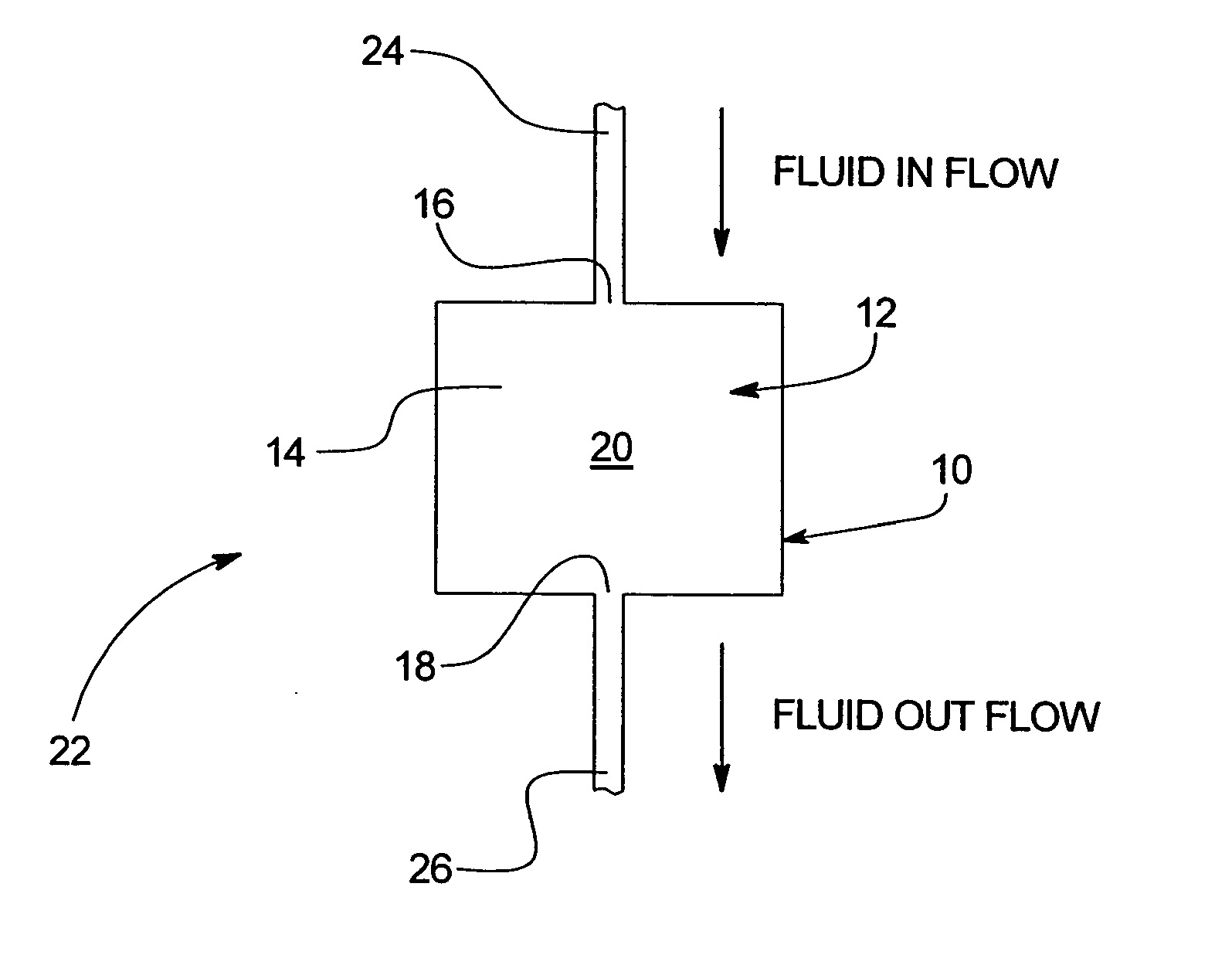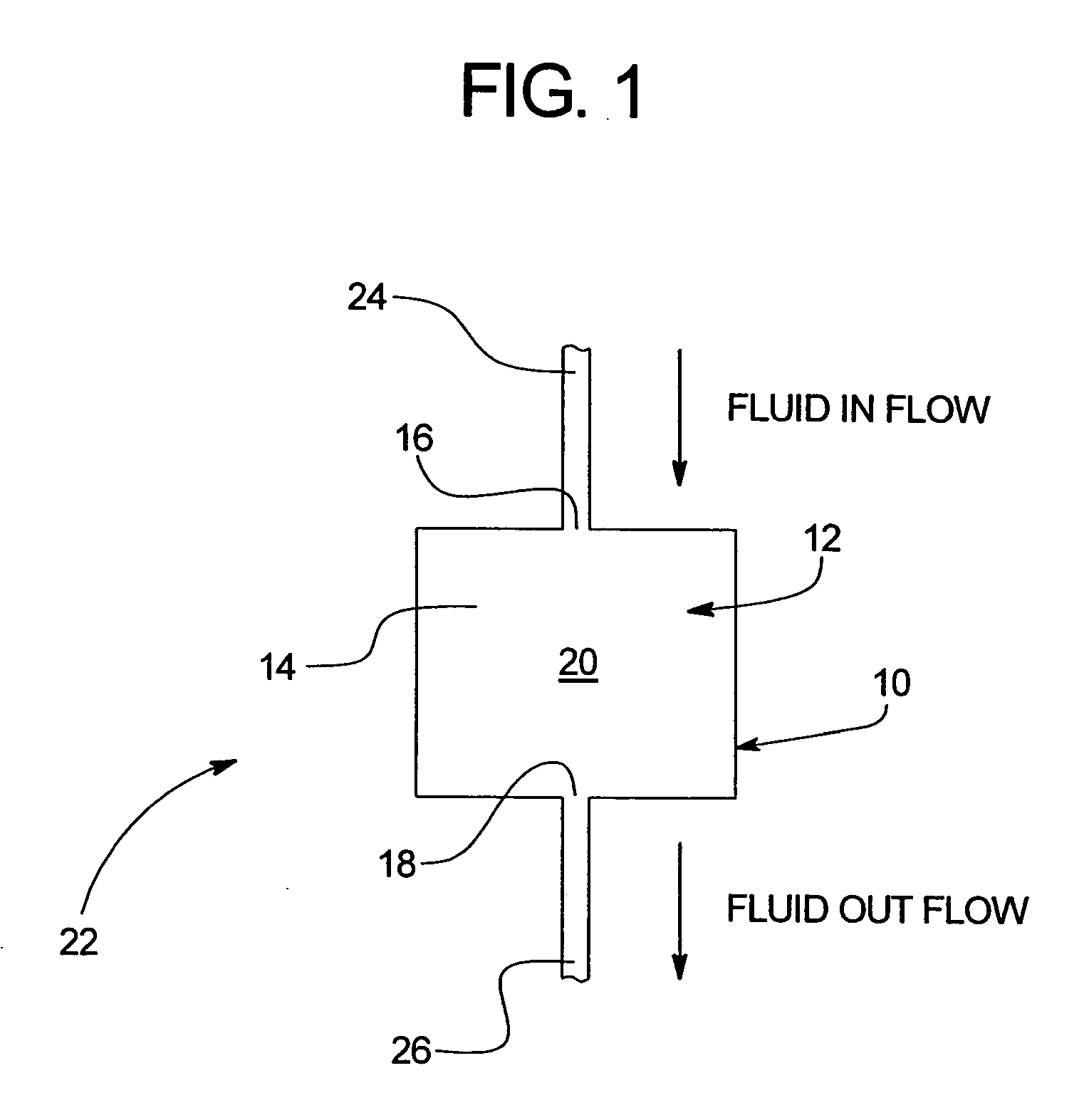Macromolecular ketoaldehydes
a technology of macromolecular compositions and ketoaldehydes, which is applied in the field of macromolecular compositions, can solve the problems of high cost of ninhydrin products, and achieve the effects of improving macromolecular compositions, improving macromolecular materials, and improving macromolecular compositions
- Summary
- Abstract
- Description
- Claims
- Application Information
AI Technical Summary
Benefits of technology
Problems solved by technology
Method used
Image
Examples
experiment 1a
dure for the Preparation of Polyvinylacetophenone from Polystyrene-divinylbenzene co-polymer resin (0.5-80% PS / DVB, 5 μm to 1 mm):
[0045] To a portion of polystyrene-divinylbenzene co-polymer resin was added dichloroethane or other suitable solvent in a ratio of 1:20 to 1:100 (w / v), which was allowed to swell for a given period of time. To the mixture may be added acetyl chloride during the swelling period. During the swelling the mixture may be heated to assist in swelling. After swelling, 1 to 10 mole equivalence to resin was added acetyl chloride followed by the addition of 1 to 10 mole equivalence of aluminum chloride or other suitable Friedel-Crafts reagent. The reaction was heated at 50° C. to 65° C. for 6 to 24 hours or until the evolution of HCl gas stopped. The resin was isolated by filtration and rinsed with acetone, water, concentrated HCl, water and acetone. The resin was then dried in vacuo at 50° C. to 80° C.
experiment 1b
dure for the Preparation of Polyvinylacetophenone from Polystyrene-divinylbenzene co-polymer resin(0.5-80% PS / DVB, 5 μm to 1 mm):
[0046] To a portion of polystyrene-divinylbenzene co-polymer resin was added dichloroethane or other suitable solvent in a ratio of 1:20 to 1:100 (w / v), which was allowed to swell for a given period of time. To the mixture may be added acetyl chloride during the swelling period. The solvent was removed from the resin, which is not dried. The resin was added to a solution of 1 to 10 mole equivalence of prepared acetyl chloride with aluminum chloride in dichloroethane or other suitable solvent. The reaction was heated 50° C. to 65° C. for 6 to 24 hours or until the evolution of HCl gas as stopped. The resin was isolated by filtration and rinsed with acetone, water, concentrated HCl, water and acetone. The resin was then dried in vacuo at 50° C. to 80° C.
experiment 2a
dure for the Preparation of α-ketoaldehyde Polystyrene-divinylbenzene Co-Polymer Resin(0.5-80% PS / DVB, 5 μm to 1 mm):
[0047] To a portion of polyvinylacetophenone polystyrene-divinylbenzene co-polymer resin was added DMSO (dimethylsulfoxide) solvent in a ratio of 1:1 to 1:100 (w / v), which was allowed to swell for a given period of time. During swelling, the mixture may be heated to assist in swelling. After swelling, 48% HBr (See, Floyd, M. B., et al. J. Org. Chem. 1985, 50, 5022-5027) was slowly added at room temperature, after which the temperature was raised to 65° C. to 95° C. and the DMS (dimethyl sulfide) was collected by distillation. After complete distillation of DMS, the reaction was heated to 95° C. or refluxed for an additional 2 to 8 hours. The resin was isolated by filtration, washed successively with water and acetone. The resin was then dried under vacuum at 80° C. for a minimum of 1.5 hours.
PUM
| Property | Measurement | Unit |
|---|---|---|
| temperature | aaaaa | aaaaa |
| temperature | aaaaa | aaaaa |
| concentration | aaaaa | aaaaa |
Abstract
Description
Claims
Application Information
 Login to View More
Login to View More - R&D Engineer
- R&D Manager
- IP Professional
- Industry Leading Data Capabilities
- Powerful AI technology
- Patent DNA Extraction
Browse by: Latest US Patents, China's latest patents, Technical Efficacy Thesaurus, Application Domain, Technology Topic, Popular Technical Reports.
© 2024 PatSnap. All rights reserved.Legal|Privacy policy|Modern Slavery Act Transparency Statement|Sitemap|About US| Contact US: help@patsnap.com










